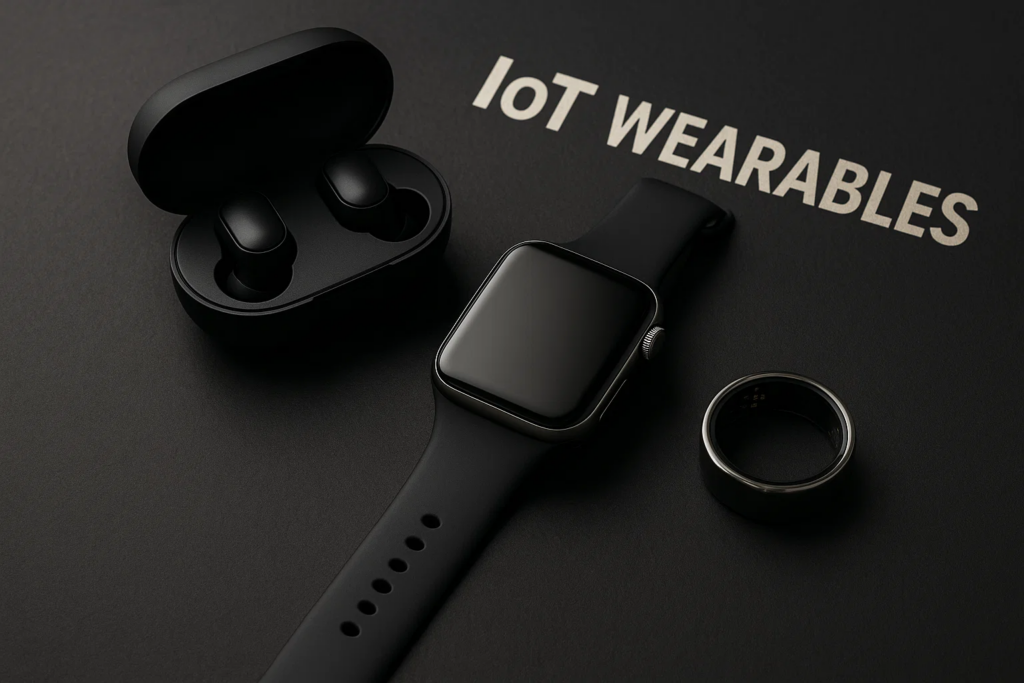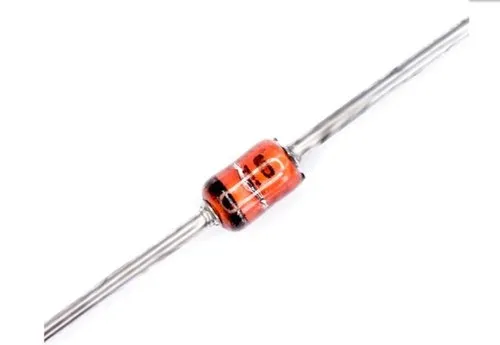Because your watch should do more than just tell time.
TL;DR – The Quick Scoop
- IoT wearables = smart tech you can wear, like fitness trackers, smartwatches, and even smart shoes (yep, that’s a thing).
- These gadgets are getting smarter, cheaper, and more useful every year.
- We’re not just talking steps and sleep — think health monitoring, remote payments, smart home control, and even safety alerts.
- If you’re not wearing at least one connected gadget in 2025, are you even living in the future?
So… What Are IoT Wearables, Really?

Let’s break it down like you just asked me over coffee.
IoT (Internet of Things) is basically a fancy way of saying “devices that talk to each other via the internet.” IoT wearables
Now throw that concept into something wearable — like a smartwatch, a fitness band, or even smart glasses — and boom , you’ve got an IoT wearable. IoT wearables
These aren’t just tech toys anymore. They’re mini-assistants, health coaches, security guards, and productivity boosters all rolled into something that clips on your wrist (or sometimes your shoes, clothes, or face).
The Evolution of IoT Wearables: From Step Counters to Life Savers
Let’s take a quick stroll down memory lane.
- 2009 – Fitbit launches its first tracker. Everyone becomes obsessed with 10,000 steps.
- 2015 – Apple Watch makes waves by blending health, productivity, and style.
- 2020s – Blood oxygen, ECG, fall detection, and stress tracking become mainstream.
- 2025 – We’re now looking at wearables that can predict a panic attack or monitor glucose without needles. Sci-fi? Nope. Just Tuesday. IoT wearables
Top Types of IoT Wearables in 2025
Here’s your wearable wardrobe — pick your tech:
1. Smartwatches
The OGs. Apple Watch, Samsung Galaxy Watch, and Pixel Watch are the big names. But now we’ve got affordable beasts from Amazfit, Xiaomi, and even OnePlus entering the arena. IoT wearables
What they do:
- Show notifications, answer calls
- Track health metrics (heart rate, blood oxygen, sleep, etc.)
- Control smart home devices
- Emergency SOS
Real talk: Some of them can literally call an ambulance if you fall. That’s superhero-level stuff.
2. Fitness Bands
Lighter, cheaper, but still powerful. Think Xiaomi Mi Band 8 or Fitbit Charge 6.
Why people love them:
- Long battery life (like two weeks kind of long)
- Slim and comfy
- Great for step tracking, workouts, and basic health insights
Perfect for folks who want functionality without all the frills.
3. Smart Rings & Earbuds
Oh yes, we’ve gone full spy-mode.
- Oura Ring: Tracks sleep, readiness, and heart rate
- Ultrahuman Ring Air: Indian-made and surprisingly accurate
- Google Pixel Buds Pro: Not just for music — now with real-time translation
These are wearables you don’t even think about wearing — but they’re still collecting useful data and giving you insights. IoT wearables
4. Smart Glasses
They’re not just a nerdy gimmick anymore.
- Ray-Ban Meta Smart Glasses: Take pics, record video, play music, and even answer your WhatsApp
- XREAL Air: Screens on your face, ideal for travelers and coders
Honestly, if Tony Stark wore them, I’ll take two.
5. Smart Clothing & Footwear
Yes, this is real. And it’s low-key amazing.
- Athos gear: Tracks muscle effort and breathing during workouts
- Nike Adapt shoes: Self-lacing, app-controlled sneakers (Back to the Future who?) IoT wearables
- Hexoskin shirts: ECG, respiratory rate, activity — all from your shirt
How IoT Wearables Are Changing Lives
We’re not just counting steps anymore. This stuff’s getting serious. IoT wearables
Health Monitoring
Some wearables now:
- Detect irregular heart rhythms (like Atrial Fibrillation)
- Track blood oxygen levels
- Monitor stress via skin temperature and heart variability
- Predict migraines and panic attacks before they happen
For people with chronic conditions (like diabetes or heart issues), wearables are turning into lifelines. IoT wearables
Smart Home Control
Imagine this:
- You walk into your house, and your smartwatch dims the lights and starts your chill playlist.
- You tap your ring, and your smart door locks behind you.
That’s not “future.” That’s 2025.
Payments & Security
Contactless payments are smoother than ever. Just flick your wrist or double-tap your ring. IoT wearables
Some devices now offer:
- Biometric authentication (face, fingerprint, or ECG-based ID)
- Geo-fencing for alerts (like if your kid leaves the house)
- Real-time location tracking — perfect for solo travelers
Productivity Boost
Set timers, take calls, check your calendar, start your car — all from your wrist or finger. IoT wearables
No more fumbling for your phone during meetings or gym sessions.
Common Challenges with IoT Wearables (Let’s Be Honest)
Okay, it’s not all rainbows and step goals. Here’s what still needs work:
Battery Life
Some smartwatches can barely last a day. Which is hilarious when you consider they’re supposed to track sleep too. Like bro, how can I monitor sleep if you keep dying at 10 PM?
Privacy Concerns
They’re tracking a lot of data: health, location, conversations.
Always:
- Check privacy policies
- Avoid shady unknown brands
- Turn off features you don’t use (like constant GPS)
Price Tags
Some high-end wearables cost more than mid-range smartphones. Unless you’re an athlete or serious biohacker, budget models often get the job done just fine.
Tips Before Buying an IoT Wearable
Not all tech is worth the hype. Here’s how to choose:
- Know your goal – Fitness? Sleep? Health? Notifications?
- Check compatibility – Not everything works with iPhones or Android.
- Battery life – You don’t want to charge every 12 hours.
- App ecosystem – A good companion app makes a HUGE difference.
- Try it on (if possible) – Comfort matters more than you think.
What’s Next for IoT Wearables?
We’re just getting started. Here’s what’s cooking in 2025 and beyond:
- Non-invasive glucose tracking: Apple’s working on it. So is Samsung.
- AI-powered health coaching: Your watch might know you better than your trainer.
- Wearables + mental health: Predicting mood swings, panic attacks, and emotional burnout before they hit.
- Wearable patches: Think Band-Aids that track hydration, electrolytes, and even your immune system.
Honestly, the line between tech gadget and healthcare device is getting blurrier by the day.
My Personal Take: Why I’ll Never Go Without One Again
I used to think wearables were gimmicky. A glorified pedometer. Then one day, my smartwatch buzzed: “Your heart rate is abnormally high while at rest.”
Long story short — I went to the doctor. Found out it wasn’t stress. It was an early warning sign. Caught in time.
Since then, I don’t just wear my watch — I rely on it. It tracks my workouts, guides my meditation, wakes me up gently with haptic taps, and even reminds me to breathe when deadlines are breathing down my neck.
Wearables may not be perfect, but for me, they’ve become essential.
Final Thoughts: Should You Jump on the IoT Wearable Train?
If you’re someone who:
- Likes to stay on top of your health
- Wants a little more convenience
- Loves cool gadgets that actually do something useful
Then yes, 100% — get one. Even a budget-friendly fitness tracker can upgrade your daily life.
Just remember: tech should enhance your life, not overcomplicate it.
So start small. Try something comfy. And don’t worry — you’ll probably end up obsessed like the rest of us.





